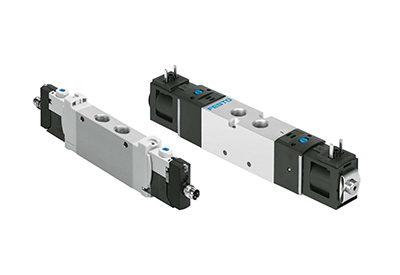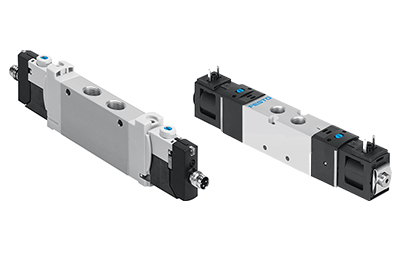Festo: Learn How Solenoid Valves React to Test Pulses

March 24, 2021
In this blog post, which is the third in Festo’s series on functional safety, we’re exploring the ways test pulses can affect solenoid valves. It is important to note that this topic pertains to an individually wired solenoid and does not apply to valve terminals utilizing bus communication, which have a varying number of solenoids that can be active at varying moments.
The electronic outputs of the safety controller and safety relay units use test pulses for diagnostic purposes. Test pulses help to detect cross circuits or check the function of the outputs relative to their switch-off capability. Depending on the manufacturer, these test pulses can have varying pulse widths of up to several milliseconds.
For example, a controller manufacturer deactivates outputs for several milliseconds in the event of an ON signal. In the event of an OFF signal, the outputs are switched on for up to 4 milliseconds to check whether they can be deactivated safely if a safety function is requested.
How does a solenoid valve react to these test pulses? If a solenoid valve is connected to a failsafe output, the test pulses can cause the valve’s LED to flicker at the same speed as the pulses. You may also hear a clicking sound in the valve, demonstrating that these test pulses do indeed affect the valve.
Many modern solenoid valves consist of a magnetic system that uses an armature to actuate a pilot valve, which actuates the working valve, which in turn actuates the drive. Even if the switching times for activation or deactivation are far higher than the duration of the test pulses, the armature reacts much earlier. In some solenoid valves, this can happen with negative test pulses, or blackout times, of just 0.1 milliseconds.
Can test pulses accidentally deactivate the solenoid valve in the event of an ON signal and negative test pulse? The reaction in the magnetic system generally indicates a reduction of the armature’s holding force, meaning that unfavorable vibration-shock conditions can occur in an unplanned activation of the pilot valve—and thus of the working valve.
Can test pulses accidentally activate the solenoid valve in the event of an OFF signal and a positive test pulse? Although positive test pulses cause the valve’s LED to flicker at the same speed as the test pulses, it is extremely rare for the pulses to cause the solenoid valve to switch. In some valves, the armature begins to move after just 0.4 milliseconds. When the machine is exposed to unfavorable vibration-shock conditions, this reaction can result in an unplanned activation of the pilot valve—and thus of the working valve.
Determining the Maximum Positive and Negative Test Pulses
In practice, it’s important to determine the maximum positive and negative test pulses, which you can find in a product’s data sheet. You must then compare these limit values to the relevant test pulses of the safe outputs used for actuation. Minimal movements caused by the test pulses can cause the magnetic system to deteriorate, which can in turn adversely affect the solenoid valve’s service life.
Test Pulse Alternatives
While there are alternatives, you should always make sure the requirements of a given performance level (PL) are met. Likewise, you must comply with the data specified in a data sheet, as well as the operating instructions.
- – Your first option is to use safe output modules, such as the Festo CPX-FVDA-P2, which uses an innovative solution to detect short circuits without test pulses. (This also works with valve terminals.)
- – You can also switch off the test pulses if possible.
- – Thirdly, you can actuate the solenoid valve via the non-pulsed output of a standard programmable logic controller (PLC). For example, connect the normally open contact of a safety shutdown relay between the solenoid valve and the output, which guarantees the safety function when needed.
During the design phase of the safety-related elements of a control system, always contact the manufacturer of the solenoid valve and ask for the maximum pulse widths of the test pulses. At Festo, you can find information on maximum positive and negative test pulses in their data sheets.





